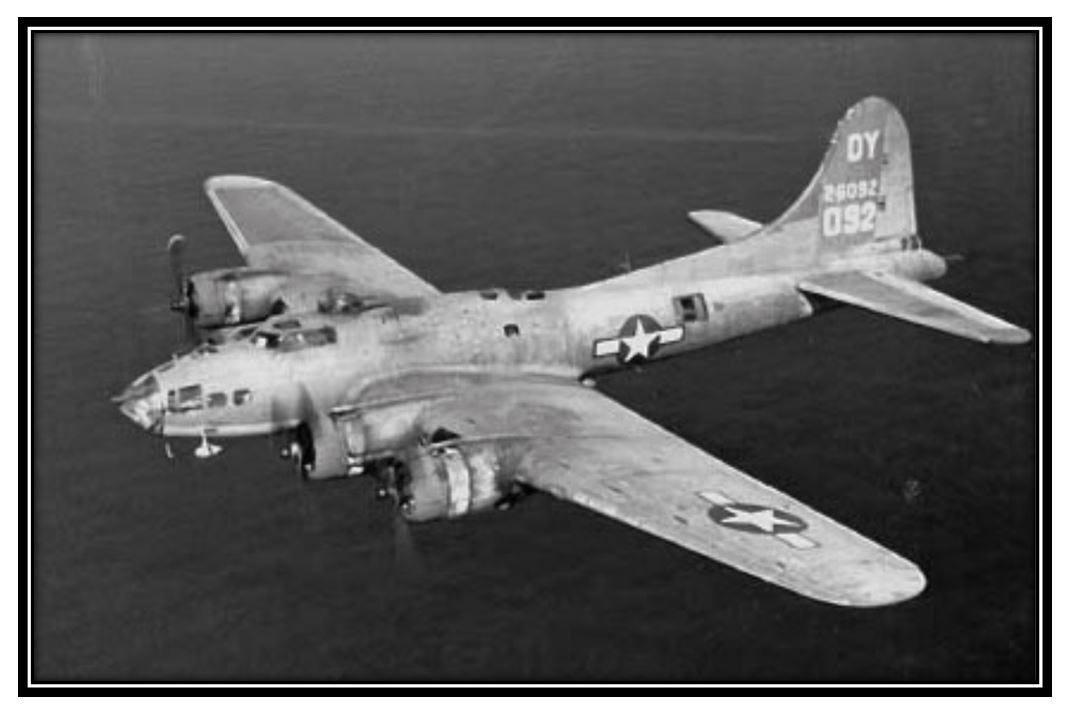TDIH: A long-stranded B-17 crew, rescued
They weren’t prepared for 129 days in frigid temperatures & icy winds. Their clothing and shoes were inadequate. They would fight gangrene, broken bones, and hunger. And yet they’d survived.
On this day in 1943, three members of a long-stranded B-17 crew are finally rescued from the Greenland Ice Cap. They’d spent 129 days in frigid temperatures and bitter winds. They’d lost friends. They’d fought gangrene, broken bones, and hunger.
And yet they’d survived.
The B-17 crew had been engaged in a search and rescue mission when they ran into trouble of their own. Just a few hours into their search, the B-17 was overcome by an unexpected whiteout storm. The pilot couldn’t see! His instruments were of no help, either. Pilot Armand Monteverde tried to carefully turn around, but the plane’s wing clipped the glacier. The B-17 crashed, skidding down the ice and breaking in two.
Amazingly, everyone survived, although two men suffered broken bones. But now the crew was stranded in the midst of the icy, difficult Greenland climate.
And winter was just beginning.
The men crowded into the tail section of the bomber, pulling a heavy tarp across the gaping hole where the front of the plane used to be. They weren’t prepared for this situation—not at all. Their clothing and shoes were inadequate. They didn’t have enough food. Sleeping bags were a pipe dream. Instead, they had seat cushions, parachutes, and travel bags. Even the drinks they’d brought with them were now frozen.
“This is as new to me as it is to you,” Monteverde told his men on that first night. “According to regulations, I am in charge. But I want any and all suggestions . . . . We will work it out together.” The crew would later say that Monteverde’s brave and humble leadership got them through the ordeal.
A few days later, tragedy nearly hit again. November 12 was the first clear day since the November 9 crash. Co-pilot Harry Spencer and navigator Bill O’Hara ventured out to look around. They hoped to better pinpoint their location.
Suddenly, Spencer went crashing through the ice. He’d accidentally stepped on a thin ice bridge that hid a gaping crevasse. Unbelievably, his fall was stopped by a random block of ice that had wedged itself into just the right spot. If Spencer had fallen even a few inches in a different direction, he would have missed it completely and plummeted to his death.
Spencer believed that divine intervention saved his life.
His crewmates were able to pull him out of the hole, but O’Hara’s feet would never recover. His shoes were all wrong for the snow, and Spencer’s rescue had taken several hours. Nevertheless, everyone mostly felt fortunate that Spencer was still alive.
That night, all nine men prayed together. They would maintain that habit of praying, as a community, for the rest of their ordeal.
Just a few days later, radio operator Loren “Lolly” Howarth gave the men another reason to cheer: He got the radio working again! It had taken days (and a lot of pain in his half-frozen fingers), but he was finally able to send an SOS message on November 16. Soon, the radio’s receiver working, too. The crew was ecstatic: People knew they were alive! Supplies were coming! They had been so close to running out of food. What a relief.
Except then a week passed without any sign of a rescue plane. The weather had deteriorated too much. Finally, on November 24, a plane broke through. It flew over the crash site and dropped supplies.
Monteverde and his men literally cried with relief, even as the tears froze on their cheeks.
Rescue efforts would be mounted, of course. The story continues tomorrow.
Sources can always be found on my website, here.





“His fall was stopped by a random block of ice that had wedged itself into just the right spot” reinforces my belief that we serve a God who is in complete control of life and death. I’m anxious to read “the rest of the story.” 😘
I will be holding my breath until tomorrow to find out what happens.